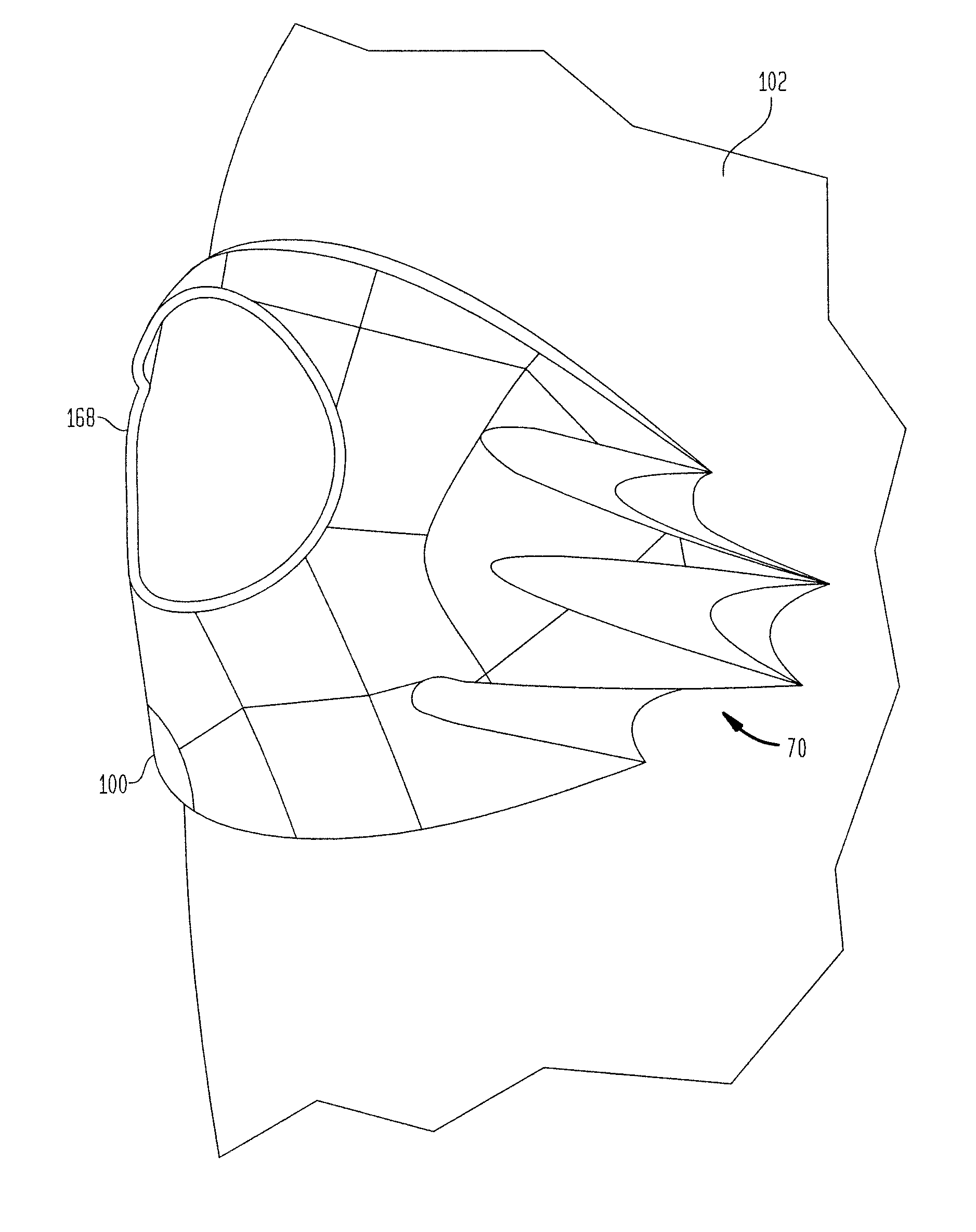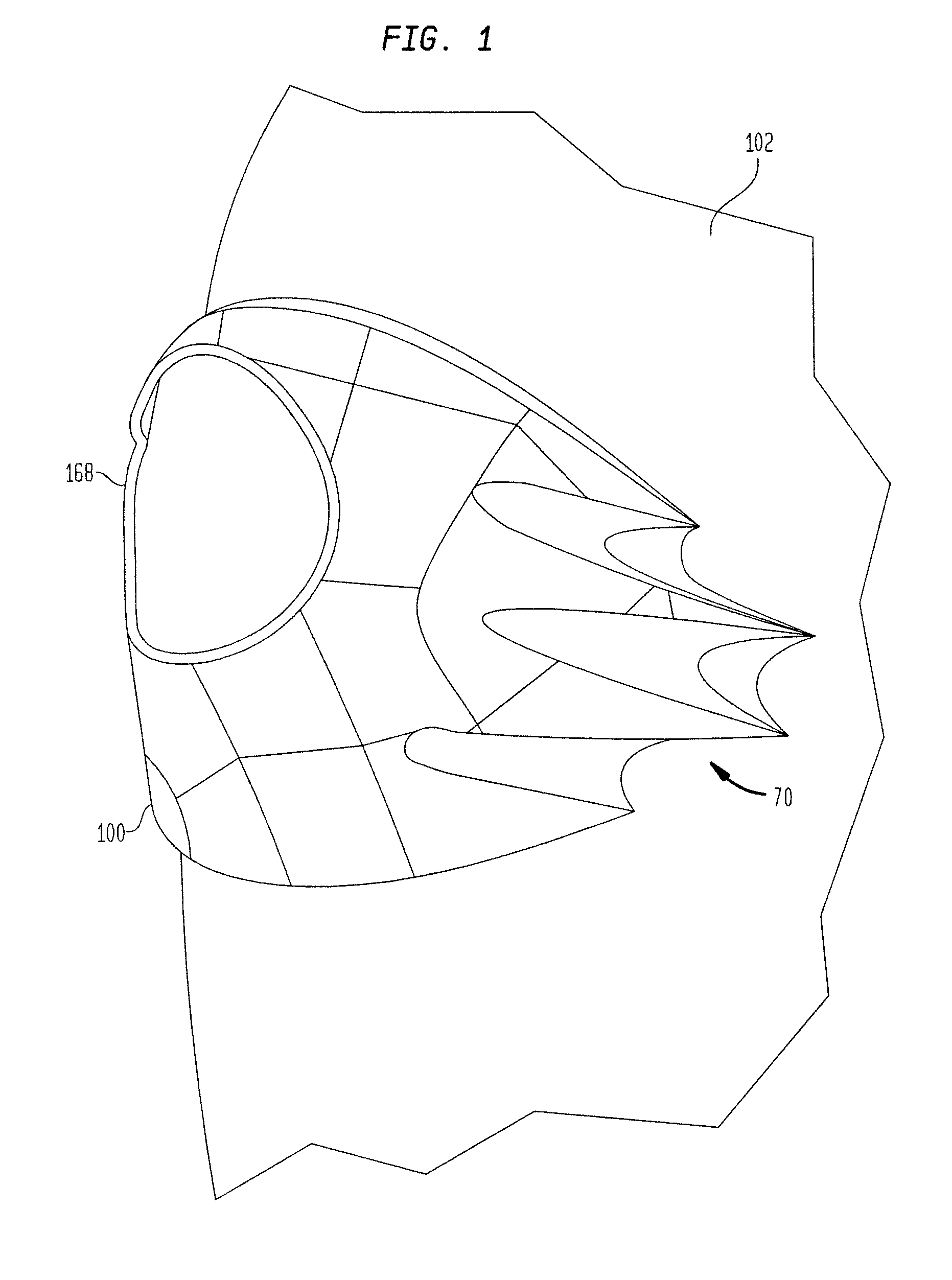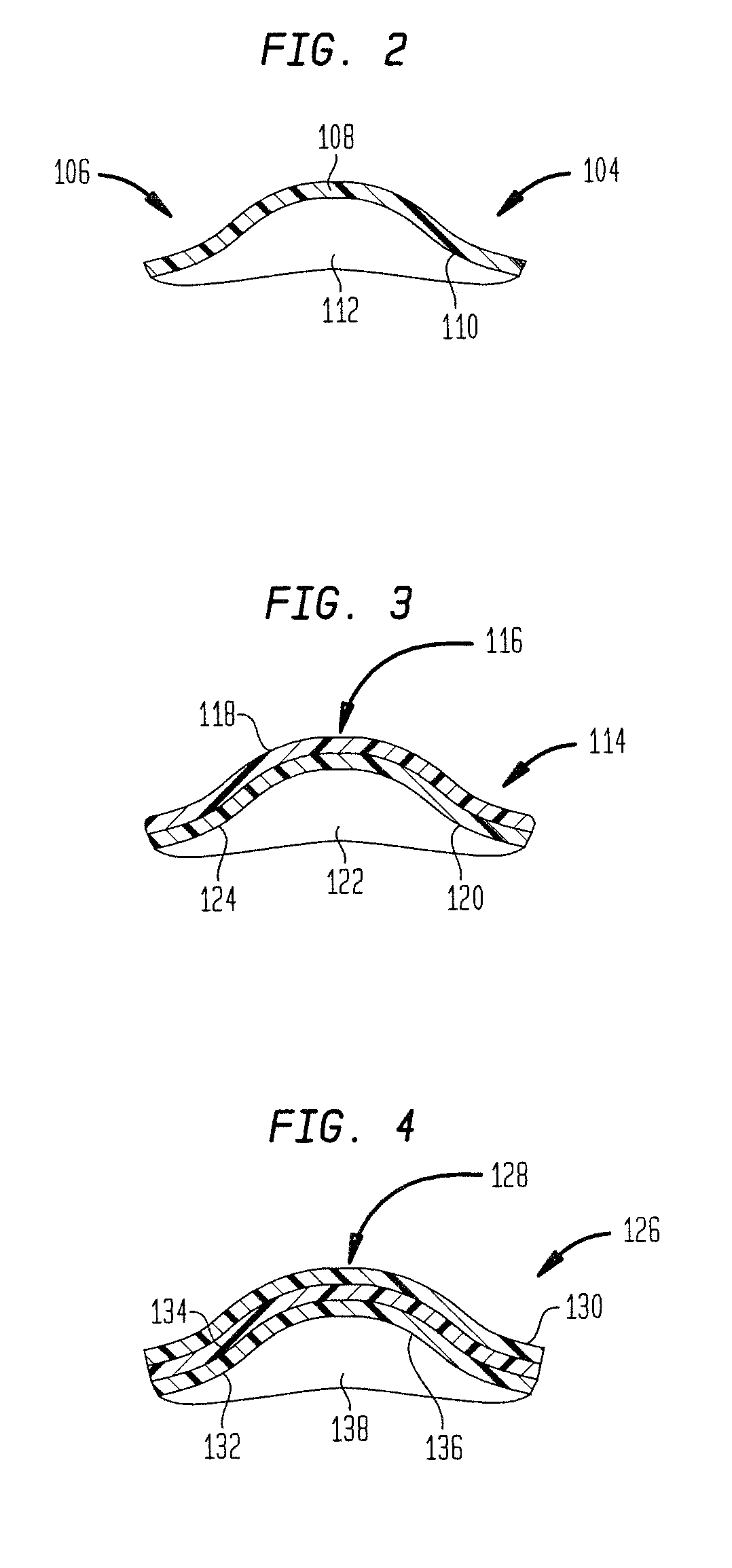Protective anatomical pads and methods of making
a technology of protective pads and anatomical pads, applied in the field of protective pads, can solve the problems of unsolved need for protective pads, unprotected intended anatomy of wearers, and often uncomfortable wearing of hard shell protective pads, and achieve the effect of reducing weight and bulk
- Summary
- Abstract
- Description
- Claims
- Application Information
AI Technical Summary
Benefits of technology
Problems solved by technology
Method used
Image
Examples
Embodiment Construction
[0028]In describing the preferred embodiments of the subject matter illustrated and to be described with respect to the drawings, specific terminology will be resorted to for the sake of clarity. However, the invention is not intended to be limited to the specific terms so selected, and needs to be understood that each specific term includes all technical equivalents which operate in a similar manner to accomplish a similar purpose. Referring to the drawings, the present invention will be described with respect to the miscellaneous embodiments, wherein like reference numerals represent like elements.
[0029]Referring to FIG. 1, there is illustrated in accordance with one embodiment of the present invention a protective pad 100 adhered to a portion of a supporting layer 102 such as a garment to be worn by the user during various activities.
[0030]The pad 100 can be constructed from one or more layers of various synthetic or natural polymers and / or natural occurring materials to provide ...
PUM
| Property | Measurement | Unit |
|---|---|---|
| stretchable | aaaaa | aaaaa |
| hardness | aaaaa | aaaaa |
| hard | aaaaa | aaaaa |
Abstract
Description
Claims
Application Information
 Login to View More
Login to View More - R&D
- Intellectual Property
- Life Sciences
- Materials
- Tech Scout
- Unparalleled Data Quality
- Higher Quality Content
- 60% Fewer Hallucinations
Browse by: Latest US Patents, China's latest patents, Technical Efficacy Thesaurus, Application Domain, Technology Topic, Popular Technical Reports.
© 2025 PatSnap. All rights reserved.Legal|Privacy policy|Modern Slavery Act Transparency Statement|Sitemap|About US| Contact US: help@patsnap.com



